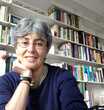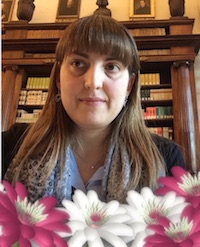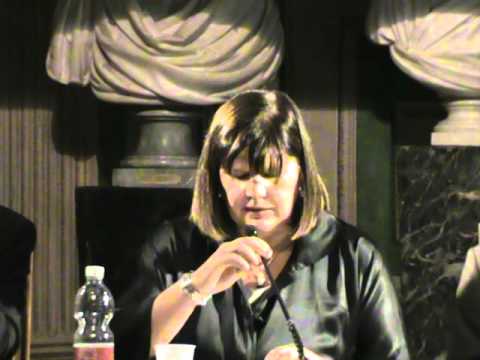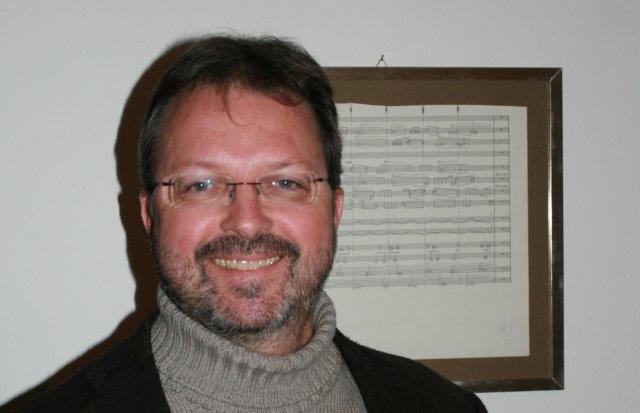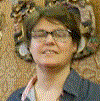Studying at the University of Verona
Here you can find information on the organisational aspects of the Programme, lecture timetables, learning activities and useful contact details for your time at the University, from enrolment to graduation.
Academic calendar
The academic calendar shows the deadlines and scheduled events that are relevant to students, teaching and technical-administrative staff of the University. Public holidays and University closures are also indicated. The academic year normally begins on 1 October each year and ends on 30 September of the following year.
Course calendar
The Academic Calendar sets out the degree programme lecture and exam timetables, as well as the relevant university closure dates..
| Period | From | To |
|---|---|---|
| I semestre | Oct 1, 2018 | Jan 12, 2019 |
| II semestre | Feb 18, 2019 | Jun 1, 2019 |
| Session | From | To |
|---|---|---|
| ESAMI LINGUE- sessione invernale | Jan 14, 2019 | Feb 16, 2019 |
| ESAMI LINGUE- sessione estiva | Jun 3, 2019 | Jul 27, 2019 |
| ESAMI LINGUE- sessione autunnale | Aug 26, 2019 | Sep 21, 2019 |
| Session | From | To |
|---|---|---|
| LAUREE LINGUE - sessione autunnale (a.a. 2017/18) | Nov 12, 2018 | Nov 17, 2018 |
| LAUREE LINGUE - sessione straordinaria (a.a. 2017/18) | Apr 1, 2019 | Apr 6, 2019 |
| LAUREE LINGUE - sessione estiva (a.a. 2018/19) | Jul 8, 2019 | Jul 13, 2019 |
| LAUREE LINGUE - sessione autunnale (a.a. 2018/19) | Nov 4, 2019 | Nov 9, 2019 |
| LAUREE LINGUE - sessione straordinaria (a.a. 2018/19) | Mar 30, 2020 | Apr 4, 2020 |
| Period | From | To |
|---|---|---|
| Festa di Ognissanti | Nov 1, 2018 | Nov 1, 2018 |
| Sospensione dell'attività didattica | Nov 2, 2018 | Nov 3, 2018 |
| Festa dell’Immacolata | Dec 8, 2018 | Dec 8, 2018 |
| VACANZE DI NATALE | Dec 22, 2018 | Jan 6, 2019 |
| VACANZE DI PASQUA | Apr 19, 2019 | Apr 23, 2019 |
| Sospensione dell'attività didattica | Apr 24, 2019 | Apr 24, 2019 |
| Festa della liberazione | Apr 25, 2019 | Apr 25, 2019 |
| Festa del lavoro | May 1, 2019 | May 1, 2019 |
| Sospensione dell'attività didattica | May 20, 2019 | May 20, 2019 |
| Festa del Santo Patrono | May 21, 2019 | May 21, 2019 |
| Festa della Repubblica | Jun 2, 2019 | Jun 2, 2019 |
Exam calendar
Exam dates and rounds are managed by the relevant Foreign Languages and Literatures Teaching and Student Services Unit.
To view all the exam sessions available, please use the Exam dashboard on ESSE3.
If you forgot your login details or have problems logging in, please contact the relevant IT HelpDesk, or check the login details recovery web page.
Should you have any doubts or questions, please check the Enrollment FAQs
Academic staff
 angela.albanese@univr.it
angela.albanese@univr.it
 benedetta.binacchi@univr.it
benedetta.binacchi@univr.it
 elisa.destro@univr.it
elisa.destro@univr.it
 alice.fiorentino@univr.it
alice.fiorentino@univr.it
 sara.paolini@univr.it
sara.paolini@univr.it
 alberto.scandola@univr.it
alberto.scandola@univr.it
 massimo.scotti@univr.it
massimo.scotti@univr.it
 silvia.zollo@univr.it
silvia.zollo@univr.it
Study Plan
The Study Plan includes all modules, teaching and learning activities that each student will need to undertake during their time at the University.
Please select your Study Plan based on your enrollment year.
1° Year
| Modules | Credits | TAF | SSD |
|---|
1st foreign language2nd foreign language1st foreign literature2nd foreign literature1 module to be chosen among the following2° Year activated in the A.Y. 2019/2020
| Modules | Credits | TAF | SSD |
|---|
1st foreign language2nd foreign language1st foreign literature2nd foreign literature1 module to be chosen among the following3° Year activated in the A.Y. 2020/2021
| Modules | Credits | TAF | SSD |
|---|
1st foreign language2nd foreign language1st foreign literature2nd foreign literature1 module among the following (philology related to 1st or 2nd foreign language)1 module among the following| Modules | Credits | TAF | SSD |
|---|
1st foreign language2nd foreign language1st foreign literature2nd foreign literature1 module to be chosen among the following| Modules | Credits | TAF | SSD |
|---|
1st foreign language2nd foreign language1st foreign literature2nd foreign literature1 module to be chosen among the following| Modules | Credits | TAF | SSD |
|---|
1st foreign language2nd foreign language1st foreign literature2nd foreign literature1 module among the following (philology related to 1st or 2nd foreign language)1 module among the following| Modules | Credits | TAF | SSD |
|---|
Legend | Type of training activity (TTA)
TAF (Type of Educational Activity) All courses and activities are classified into different types of educational activities, indicated by a letter.
French literature 3 (2020/2021)
Teaching code
4S002946
Teacher
Coordinator
Credits
9
Language
French
Scientific Disciplinary Sector (SSD)
L-LIN/03 - FRENCH LITERATURE
Period
I semestre (Lingue e letterature straniere) dal Sep 28, 2020 al Jan 9, 2021.
Learning outcomes
In accordance with the periodization adopted in our French literature courses (first year: from 1850 to the present ; second year: Eighteenth century and first half of the Nineteenth century; third year: Sixteenth and Seventeenth centuries), this course aims to present the French Literature of the 16th and the 17th Centuries and the artistic and philosophical culture of those historical periods. Moreover, the professor intends to provide students with the theoretical and methodological tools for the literary and linguistic analysis of the proposed texts. The lessons will be held in French, with the purpose of improving the students’ linguistic level as well. The courses will consist in lectures and seminars. Remedial courses will be organised as well.
Program
a. La Lyre chrestienne
Texts
J. DU BELLAY, La Monomachie de David et de Goliath. Ensemble plusieurs autres œuvres poetiques, Genève, Droz, 1981
La Lyre Chrestienne, Avec la Monomachie de David & Goliath, & plusieurs autres chansons spirituelles, Nouvellement mises en Musique par A. De Hauville, Lyon, Simon Gorlier, 1560 (a PDF will be available on ESSE 3)
Une gerbe de poèmes pour Marguerite de France : de l’Olive aux Regrets, antologia cura della docente (a PDF will be available on ESSE 3)
Marguerite de NAVARRE, L’Heptaméron, éd. Nicole CAZAURAN et Sylvie LEFÈVRE, Paris, Gallimard, Folio classique, 2000
Marguerite de NAVARRE, Poésies chrétiennes, Paris, Le Cerf, 1996
Madame de LA FAYETTE, La Princesse de Clèves et autres romans, Paris, Gallimard, Collection «Folio», 1972
b. Montaigne et l’Italie
Text
MONTAIGNE, Essais, édition par Emmanuel Naya, Delphine Reguig-Naya et Alexandre Tarrête, Paris, Gallimard, “Folio Classiques”, 3 volumes
Critical Texts
D. BOCCASSINI, La Parola riscritta: Guillaume Gueroult, poeta e traduttore nella Francia della Riforma, Firenze, La Nuova Italia, 1985.
R. GORRIS CAMOS, « Ceste Fleur soüesve et excellente » : Gueroult et son anthologie pour Marguerite in Princesse des frontières, chap. IV (a PDF will be available on ESSE3)
Eadem, « Bassi pensieri in me non han più loco» (s. xxxiv) : Veronica Gàmbara e le altre, in “L’Universo Mondo”, Rivista del Gruppo di studio sul Cinquecento francese, n. 47, 2020 (on line publication, www.cinquecentofrancese.it)
E. BALMAS, Guillaume Gueroult et Théodore de Bèze : un curioso esempio di concorrenza letteraria nel XVI secolo, “Annali dell’Università di Padov”, serie I, vol. IV, 1969, pp. 3-40.
M. AUDET, La bibliothèque d’une reine : les lectures de Marguerite de Navarre , Sciences et littérature : actes du VIIe colloque Jeunes chercheurs du CIERL (8-9 juin 2007, Université Laval, Québec), Solange Lemaitre-Provost et Esther Quellet (dir.), Paris, Hermann, 2013, pp. 215-236.
N. VIET, Caméron, Décaméron, Heptaméron : la genèse de l’Heptaméron au miroir des traductions françaises de Boccace , « Seizième Siècle », n° 8, 2012, Les textes scientifiques à la Renaissance, V. Giacomotto-Charra et J. Vons (dir.), pp. 287-302.
https://www.persee.fr/doc/xvi_1774-4466_2012_num_8_1_1058
N. CAZAURAN, Le langage ‘biblien’ des devisants de L'Heptaméron, « Bibliothèque d’Humanisme et Renaissance », n° 70, Genève, 2008, pp. 281-200.
R. GORRIS CAMOS, Le fleuve et le pré: rhétorique du cœur et de l’esprit dans L’Heptaméron de Marguerite de Navarre, in Pratiques de la rhétorique dans la littérature de la fin du Moyen Age et de la première modernité, Actes du Colloque de Wolfenbüttel (D), 9-11 octobre 2003, Herzog August Bibliothek, Turnhout, Brepols, 2008, pp. 65-88
Eadem, “Ananas e narcisi gialli doppi”: Montaigne nel giardino italiano, ramificazioni, rizomi, intrecci, in “L’Universo Mondo”, Rivista del Gruppo di studio sul Cinquecento francese, n. 47, 2020, direzione della rivista di Rosanna Gorris Camos (on line publication, www.cinquecentofrancese.it)
Bulletin de la Société internationale des amis de Montaigne, n. 68, 2018/2, 158 pp.
A. NIDERST, La Princesse de Clèves de Madame de Lafayette, Paris, A.-G. Nizet, 1977
History of 16th century French literature
A seminar will be organised to introduce students to the history of 16th and 17th century French literature:
F. LESTRINGANT, J. RIEU, A. TARRÊTE, Littérature française du XVIe siècle, Paris, PUF, 2000.
or:
R. CRESCENZO, Histoire de la littérature française du XVIe siècle, “Unichamp”, Paris, Champion, 2001.
or:
F. LESTRINGANT - M. ZINK dir. , Histoire de la France Littéraire, Naissances, Renaissances, Moyen Age-XVIe siècle, Paris, PUF, 2006, capp. 3 e 4 (la parte concernente il Rinascimento).
Antologia Il Cinquecento, a cura di Anna Bettoni e Bruna Conconi, Milano, LED, 1996
Storia europea della letteratura francese. Vol. 1: Dalle origini al Seicento, a cura di L. Sozzi, Torino, Einaudi, 2013
Examination Methods
Oral exam, in French, based on the texts analysed during the course. The assessment will be based on the following criteria: quality of oral expression in French, clarity and consistency of the argumentation, completeness of the information and ability to think critically.
Teaching materials e documents
-
 Programma 2020-2021 PDF
(pdf, it, 349 KB, 30/06/20)
Programma 2020-2021 PDF
(pdf, it, 349 KB, 30/06/20)
Type D and Type F activities
To discover all the teaching activities accredited by the foreign teaching college click here
Career prospects
Module/Programme news
News for students
There you will find information, resources and services useful during your time at the University (Student’s exam record, your study plan on ESSE3, Distance Learning courses, university email account, office forms, administrative procedures, etc.). You can log into MyUnivr with your GIA login details: only in this way will you be able to receive notification of all the notices from your teachers and your secretariat via email and soon also via the Univr app.
Student login and resources
Gestione carriere
Assegnazione tutore
Attività accreditate D/F
Calendario didattico dettagliato
Cambio lingua curriculare
Competenze informatiche
Competenze linguistiche (prima e seconda lingua)
Competenze linguistiche in triennale (terza lingua CFU F)
Compilazione del piano didattico
Corso di Lingua portoghese
Erasmus+ e altre esperienze all'estero
Linguistic training CLA
Presentazione dei corsi di studio e Open day
Graduation
Saperi minimi
Stage e tirocini
Le attività di stage sono finalizzate a far acquisire allo studente una conoscenza diretta in settori di particolare interesse per l’inserimento nel mondo del lavoro e per l’acquisizione di abilità professionali specifiche.
Le attività di stage sono svolte sotto la diretta responsabilità di un singolo docente presso studi professionali, enti della pubblica amministrazione, aziende accreditate dall’Ateneo veronese.
I crediti maturati in seguito ad attività di stage saranno attribuiti secondo quanto disposto nel dettaglio dal “Regolamento d’Ateneo per il riconoscimento dei crediti maturati negli stage universitari” vigente.
- Tutte le informazioni in merito agli stage per futuri studenti sono disponibili alla pagina Stage e tirocini.
- Tutte le informazioni in merito agli stage per studenti iscritti sono pubblicate in MyUnivr - come fare per - stage e tirocini.
- Tutte le informazioni in merito agli stage per le aziende sono disponili alla pagina Stage e tirocini per azienze.
Ulteriori informazioni al seguente link https://www.univr.it/it/i-nostri-servizi/gestione-carriere-studenti-lingue-e-letterature-straniere/stage-e-tirocini-lingue-e-letterature-straniere
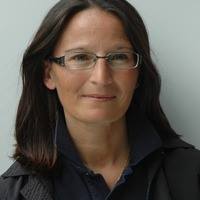

 +39 045802 8409
+39 045802 8409


